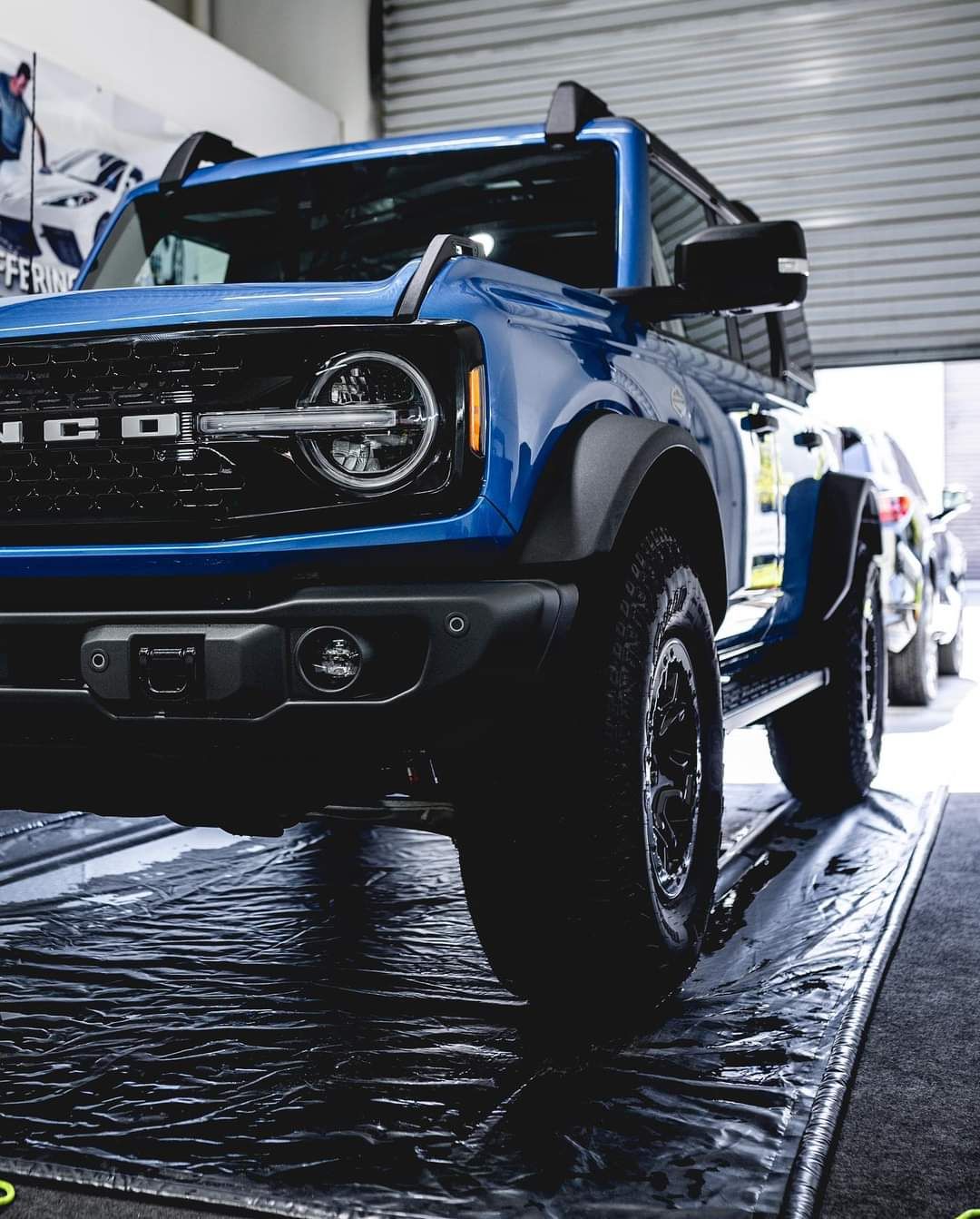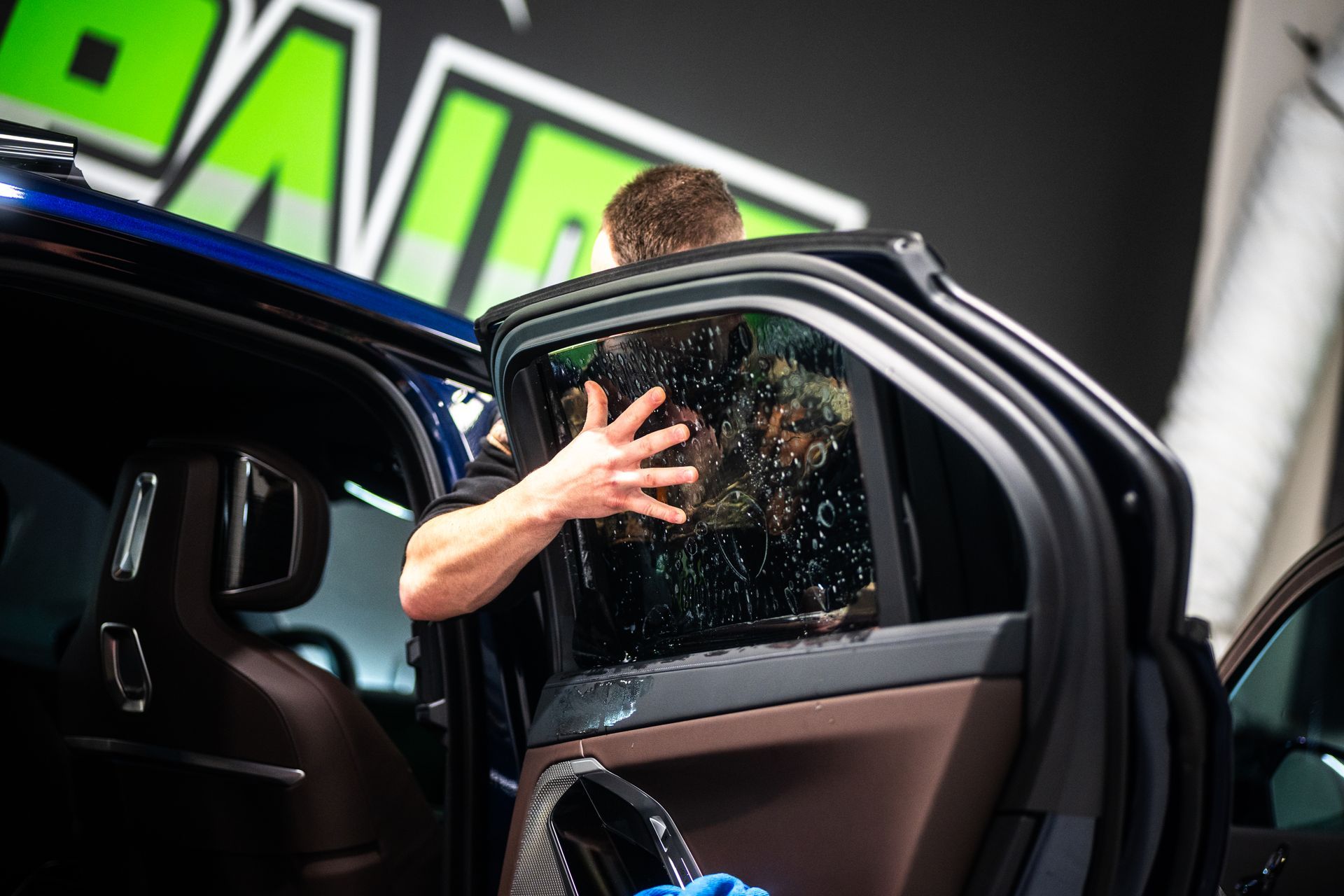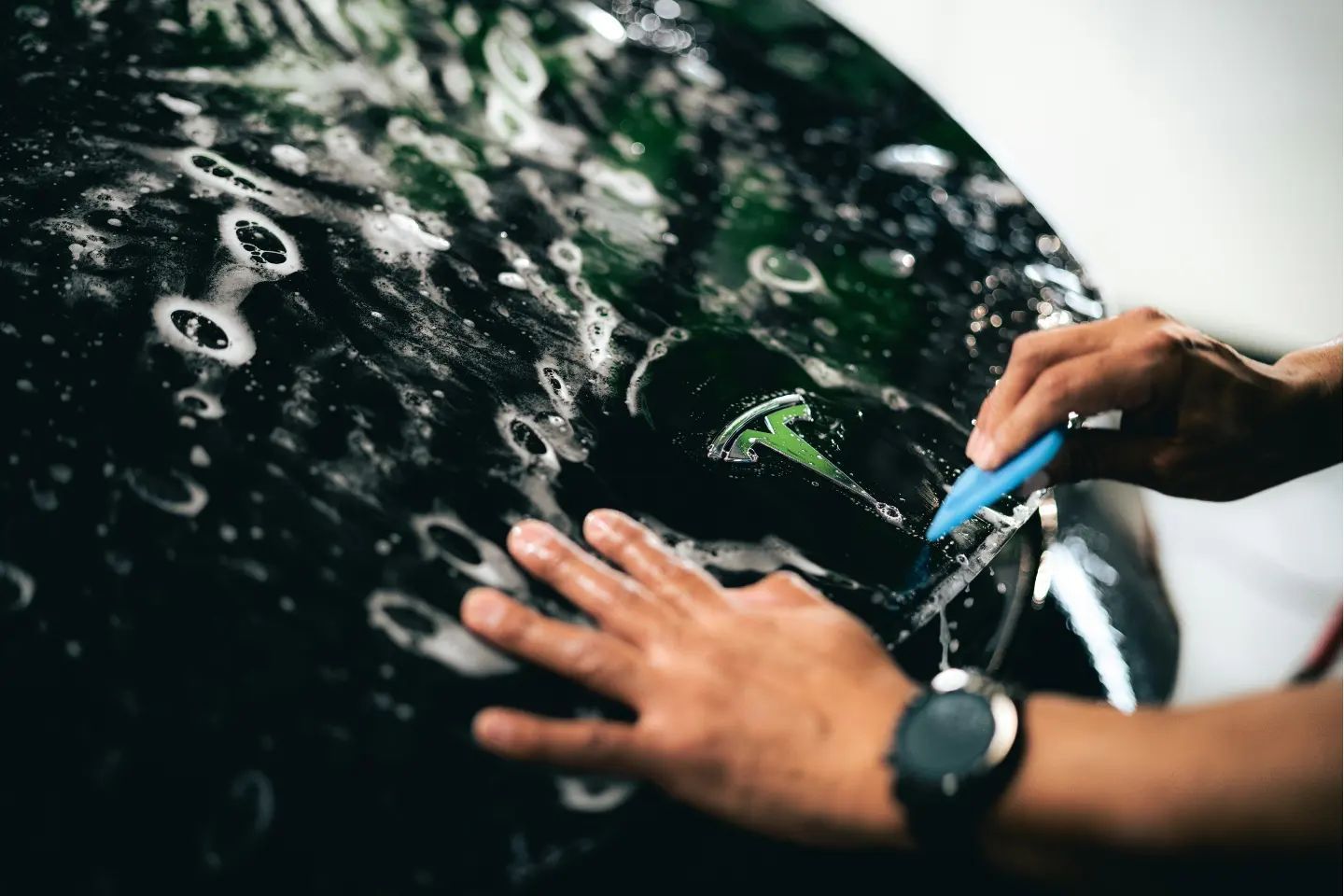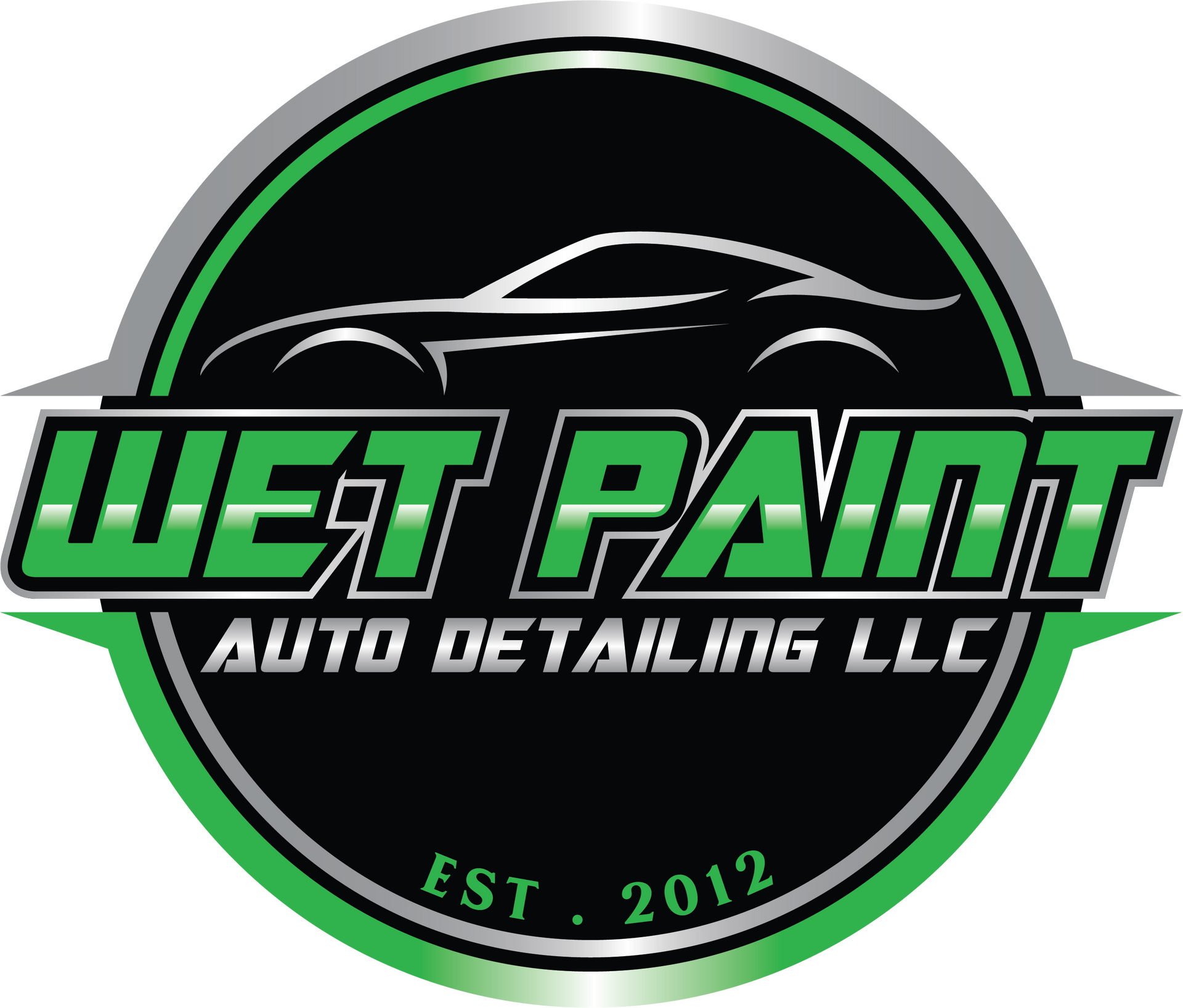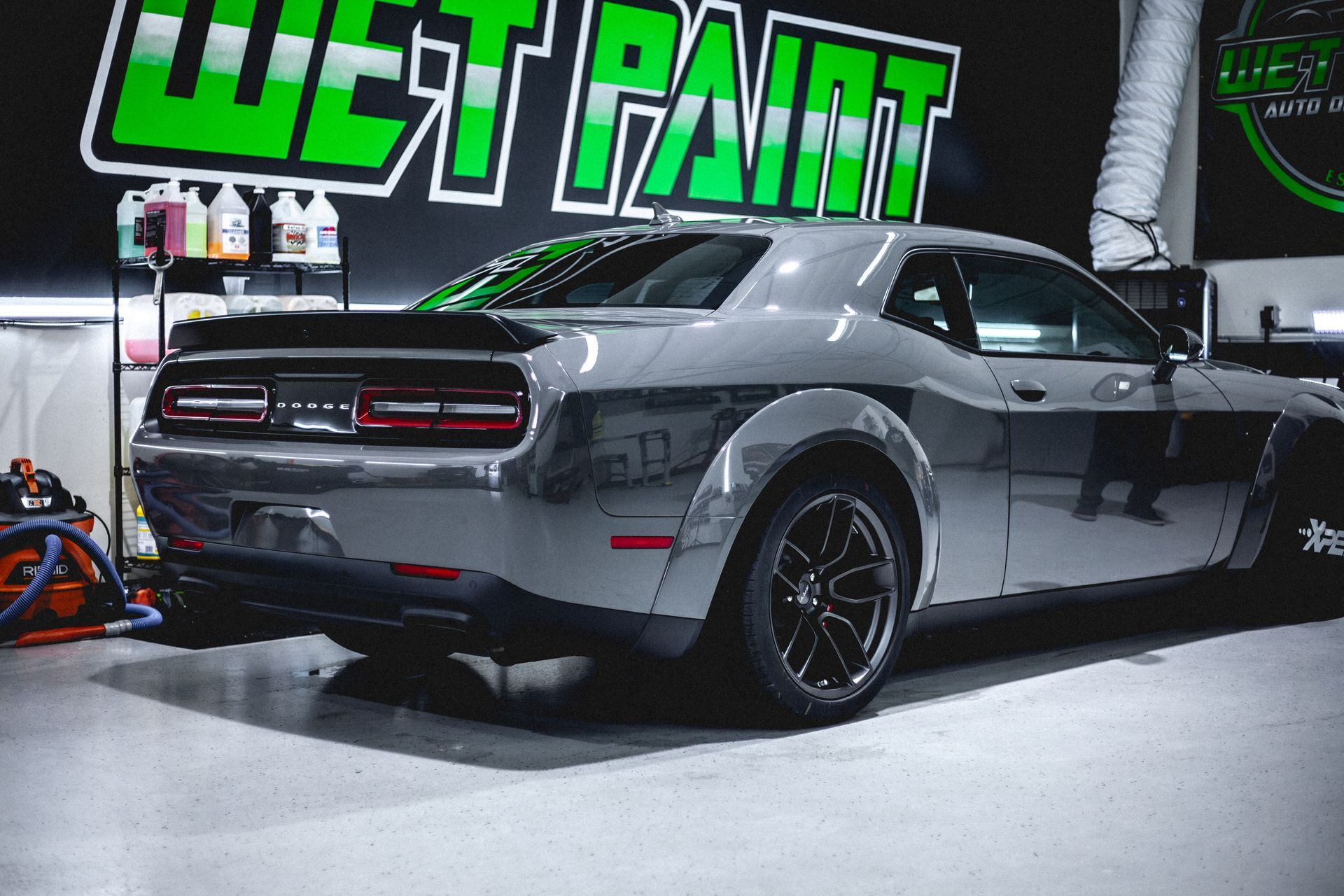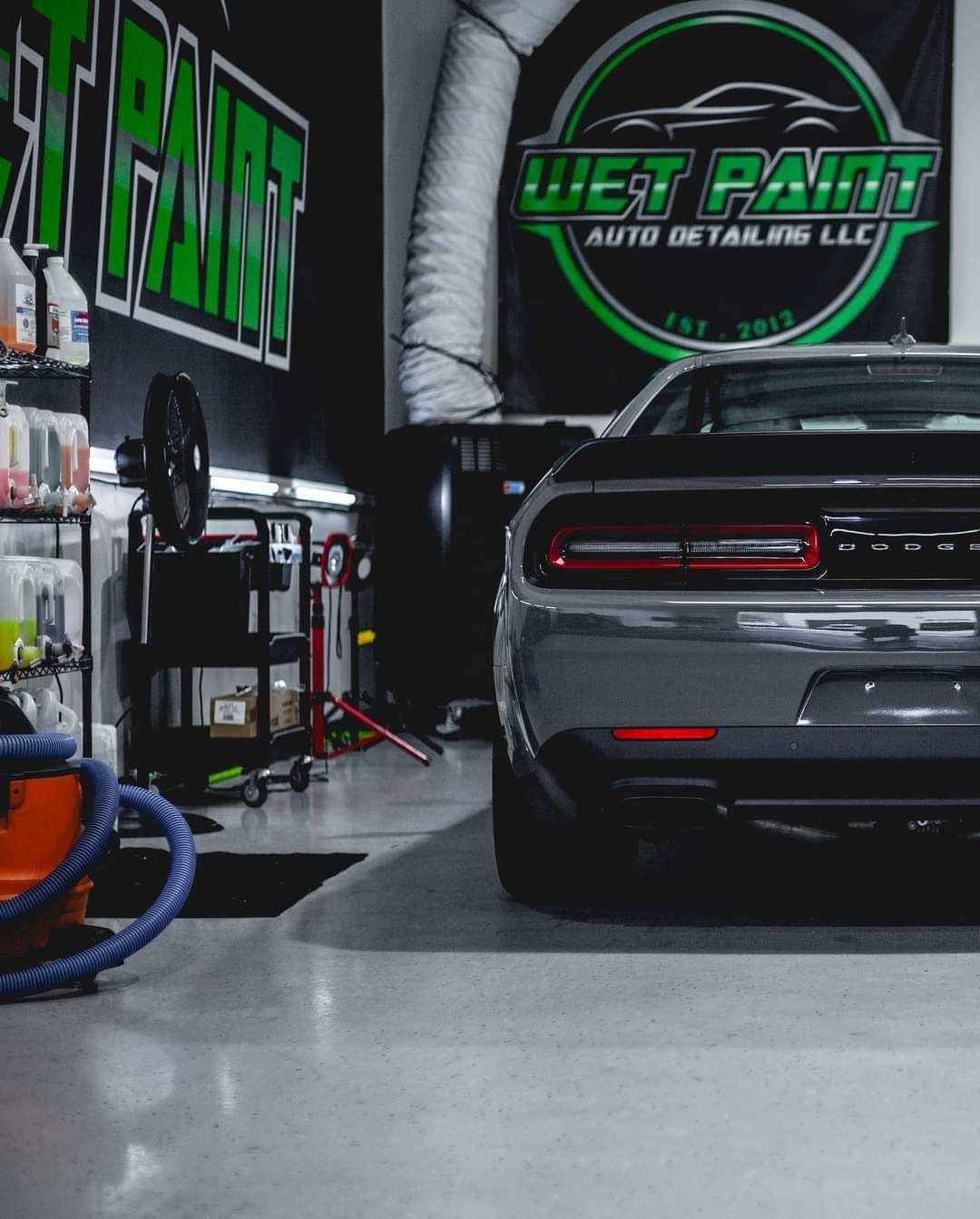Weather can be brutal on your car's exterior. From harmful UV rays causing paint to fade to rain leaving stubborn water spots, protecting your car's finish can feel like an endless battle. But imagine having a protective shield that's more resilient than traditional wax—this is where ceramic coating comes in. This advanced liquid polymer chemically bonds with your car's paint, providing lasting protection against environmental damage. Made with silicon dioxide and titanium dioxide, it forms a nano-ceramic layer that's impervious to contaminants. Not only does it shield your car from UV rays, but it also significantly reduces maintenance time and effort.
Ceramic coating shields your car from the elements by providing a robust barrier against UV rays, preventing paint fading and deterioration. It also repels water, making rain and wash water bead up and roll off, taking dirt and grime with it, thus keeping your car's exterior protected from the weather.
What is Ceramic Coating?
Ceramic coating acts as a shield for your car's paint, as tiny ceramic particles in liquid form bond to the vehicle's surface. These microscopic particles create a robust protective layer that repels dirt and other substances. Once applied, the ceramic coating chemically bonds with the factory paint, creating a semi-permanent barrier against external elements. This isn't just your regular wax or sealant; a correctly applied ceramic coating can last for several years, providing robust protection for your vehicle. The key components in these coatings are silicon dioxide (SiO2) and titanium dioxide (TiO2), which combine to create a nano-ceramic shield that withstands environmental contaminants effectively.
When we say "nano-ceramic," we mean this layer is constructed at the smallest possible scale. You can think of it as a high-tech suit of armor for your car. It's designed to work on a molecular level, forming an invisible protective shield that shields the paint from damage caused by environmental factors such as UV rays, harsh chemicals, or acid rain. This kind of next-level protection keeps your car looking shiny—just as good as new. Imagine you have a force field around your car that repels dirt, grime, and stains—the same way you'd see water bead up on a waxed surface. The ceramic coating works like this, making it easier to clean off anything that might land on your vehicle.
Now, some might argue that traditional waxes and sealants also offer protection—why go through the hassle of ceramic coating? Well, traditional waxes and sealants do offer some level of protection, but they pale in comparison to the durability and longevity of ceramic coatings. Ceramic coatings provide enhanced resistance to various forms of damage over extended periods—a significant advantage over traditional methods.
Sun and UV Ray Protection
The sun's intense rays can wreak havoc on your car's paint job. UV radiation is particularly notorious for breaking down the molecular bonds in paint, causing it to fade, dry out, and eventually crack. This type of damage not only dulls the surface of your vehicle but also compromises its structural integrity.
This is where ceramic coating steps in as a guardian against these damaging effects. By forming a resilient layer over your car's paint, ceramic coating acts as a shield that reflects UV rays away from the surface. Imagine it as a force field around your car, constantly deflecting these harmful rays. So, while unprotected cars are at the mercy of the sun's unrelenting assault, those with ceramic coatings are effectively sheltered from the worst of its impact. Think of it this way: just as sunscreen shields your skin from the sun's harmful radiation, ceramic coating acts as a sunblock for your car. It filters out the harmful UV rays and keeps your car looking youthful and pristine.
Studies have indicated that vehicles equipped with ceramic coatings experience up to 50% less paint fading compared to those without. This impressive protection goes a long way in maintaining your car's aesthetic appeal and resale value over time. So, if you live in a sunny area or frequently park your car outside, investing in ceramic coating can be a game-changer for preserving your vehicle's appearance.
Weatherproof Benefits
Whether you live in a rainy climate or a place prone to snowstorms, your vehicle faces the elements every day. Rain, snow, hail, and even salty coastal air can all take a toll on your car's exterior. But fear not, because ceramic coatings provide an extra layer of protection against these environmental hazards.
One standout feature of ceramic coating is its hydrophobic nature—meaning it repels water effectively. When rain falls or snow lands on your car's surface, the ceramic coating causes it to bead up and roll off, taking dirt and grime with it. This action significantly reduces the chances of water spots forming on your vehicle's paint, which can be a real eyesore. In regions where snowy conditions are common, ceramic coatings truly shine. Think about the salty slush that gets all over the car during winter—ceramic coatings make it much less likely for salt and ice to stick to the surface. This not only makes your car easier to clean but also dramatically reduces the risk of rust forming due to corrosion.
Another benefit is that ceramic coating creates an additional barrier that acts as a shield against small impacts from hail and debris kicked up by strong winds. It's like giving your car a protective cloak that helps minimize potential damage from these everyday hazards. The slickness provided by ceramic coatings makes it more difficult for dirt and grime to adhere to the car's surface. This translates into less frequent washing and detailing sessions while maintaining a pristine appearance for longer periods. Overall, ceramic coating offers robust defense against various weather conditions and environmental pollutants, ensuring that your car maintains its sleek appearance and structural integrity for years to come.
Durability and Longevity
Ceramic coatings act as a suit of armor for your car, providing durable protection against environmental hazards. They are designed to withstand the elements, offering a shield against UV rays, harsh weather conditions, and chemical exposure that can damage your car's paint over time. When applied correctly, a ceramic coating acts as a long-term barrier, protecting your vehicle for an extended duration—typically 2-5 years, depending on the specific product used and maintenance practices.
The durability of ceramic coatings far surpasses traditional waxes and sealants, which may offer only a few months of protection before needing reapplication. Ceramic coatings provide a much longer-lasting shield, ensuring that your car remains safeguarded from various external aggressors and maintains its pristine appearance regardless of the environmental challenges it faces.
Superior Protection
Ceramic coatings have been praised for their ability to preserve a vehicle's appearance and minimize signs of wear and tear over time. This is especially notable in regions with harsh climates where extreme temperatures, UV exposure, and high humidity can accelerate the deterioration of automotive paint. Unlike traditional treatments that degrade quickly under such conditions, ceramic coatings continue to shield the car's surface effectively. Moreover, this superior protection isn't limited to just the exterior of the vehicle. The ease of cleaning offered by hydrophobic ceramic coatings also contributes to their longevity. By repelling water, dirt, and grime, these coatings reduce the frequency and intensity of cleaning required to maintain the vehicle's appearance—saving time while minimizing abrasive contact with the paintwork, further enhancing its longevity.
Another factor contributing to the long-lasting nature of ceramic coatings is their ability to prevent deep-set staining and erosion of masonry joints. Regular application ensures that pollutants do not penetrate the coating's protective layer, preserving the pristine condition of the vehicle. This level of preservation positively impacts the resale value of cars by communicating to potential buyers that the vehicle has been well-maintained. The exceptional durability and longevity of ceramic coatings make them an invaluable investment for any car owner seeking long-term protection and aesthetic appeal.
Application Process
Applying ceramic coating to your car isn't quite like applying regular wax or sealants. It's a meticulous process that involves proper surface preparation and careful application techniques. Here's a step-by-step breakdown of how this protective layer is expertly applied to your vehicle's exterior:
- Surface Preparation: Before applying the ceramic coating, it's crucial to ensure that the car's surface is impeccably clean and free from any impurities. This involves thorough washing to remove dirt and grime, followed by decontamination to eliminate old wax, sealants, and other contaminants that may have built up over time. This preparation often includes the use of a clay bar treatment to remove embedded particles and polishing to restore the smoothness of the paint surface. The goal here is to create an absolutely clean canvas for the ceramic coating to bond with, ensuring maximum effectiveness and longevity.
- Applying the Ceramic Coating: Once the surface is perfectly prepped, it's time to apply the ceramic coating itself. This usually involves dispensing small amounts onto an applicator pad and spreading it evenly over a small section of the car's surface. The key here is to ensure even application without uneven streaks or patches, guaranteeing uniform protection across the entire vehicle’s exterior.
- Buffing and Curing Time: Following the application of the ceramic coating, gently buffing the area using a microfiber cloth comes next. This serves to remove any excess coating and achieve a uniformly sleek, streak-free finish. Once the ceramic coating has been applied and buffed, it's essential to let it cure properly. This typically involves abstaining from exposing the vehicle to water for a specified period, often ranging from 24 to 48 hours based on manufacturer instructions.
Adhering meticulously to this application process ensures that your vehicle receives expert-level protection and harnesses all of the remarkable benefits offered by ceramic coating.
Maintenance and Care
Your vehicle looks stunning with its new ceramic coating, but to keep it that way, regular maintenance is crucial. Imagine your ceramic coating as a suit of armor for your car—it needs care and attention to continue providing the protection it promises.
The first step in maintaining a ceramic coating is gentle washing. You can't just use any soap on your car if you want to preserve the protective layer. Most commercial soaps contain harsh chemicals that break down the coating; this is where pH-neutral car shampoos come in handy. They clean the car without harming the coating. When washing, it's important to avoid abrasive materials like rough sponges or brushes, as they can scratch and compromise the coating. Automatic car washes might seem convenient, but they often use harsh chemicals and rough brushes that can damage ceramic coatings. Even though your schedule may make it tempting to use an automatic wash, taking the time to wash your vehicle by hand (or finding a touchless car wash) is well worth preserving the integrity of the coating.
Beyond regular washes, periodic inspections are crucial to ensuring your ceramic coating remains effective. Every few months, take a close look at the coating for any signs of wear or damage. This could be things like water no longer beading on the surface or finding scratches or areas where the coating has worn away; if so, reapplication may be necessary to maintain optimal protection. Taking good care of your ceramic-coated vehicle can extend the life of the coating, preserving that glossy finish and providing long-lasting protection against environmental contaminants. It may seem like extra work, but think of it as investing in the longevity of your vehicle's appearance and protection.
In the world of automotive care, the benefits of proper maintenance cannot be overstated. By investing time and effort into safeguarding your ceramic coating, you are ensuring that your vehicle continues to radiate a pristine shine and remains shielded from detrimental elements.
Exceptional Ceramic Coating Service in Roseville, CA
Safeguard your vehicle's paint with Wet Paint Auto Detailing’s exceptional ceramic coating service in Roseville, CA. Our advanced ceramic coatings provide a durable layer of protection that resists stains, dirt, and environmental damage while delivering a stunning gloss that lasts. Experience long-lasting shine and easy maintenance with our professional ceramic coating installation, designed to keep your vehicle looking its best for years to come. Schedule an appointment with us today or call us at (916) 918-2289 to get started!
